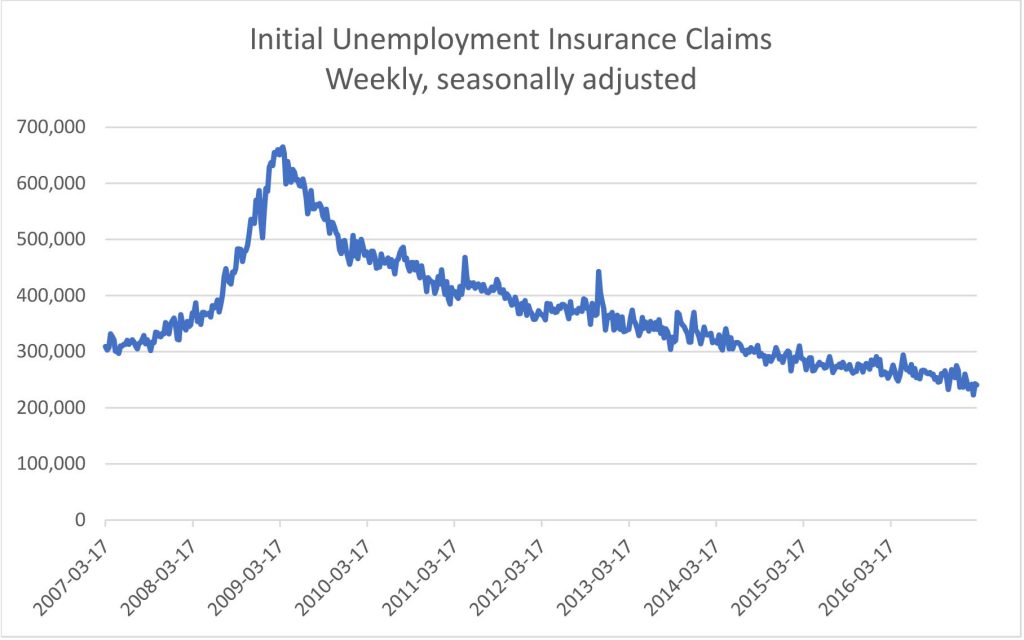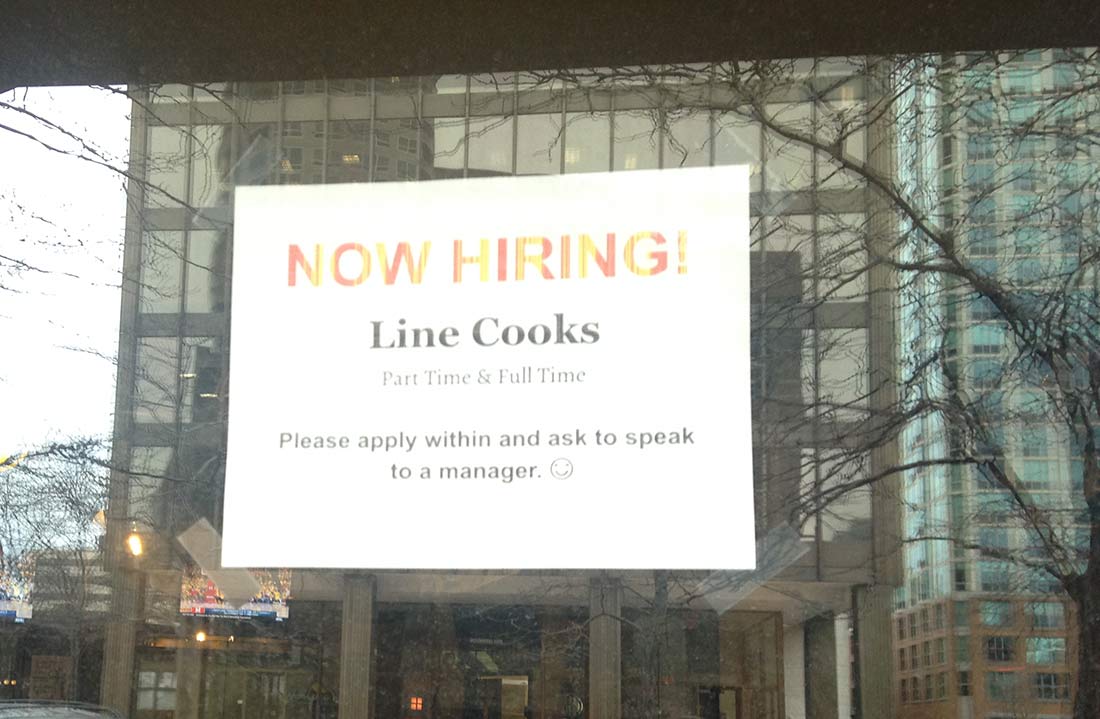By Karen Lentz
Initial unemployment insurance claims for the week ended March 11 trickled down to an advance figure of 241,000, a decrease of 2,000 from the previous week’s seasonally adjusted unrevised level of 243,000, the U.S. Department of Labor reported Thursday. The numbers remain below pre-recession levels, pointing to continued gains for the economy.
New unemployment claims are compiled weekly based on the number of workers who filed for unemployment insurance for the first time.
“These are very good numbers indicating tight labor market conditions,” Daniel Sanabria of Comerica Bank wrote in a note.
Decreases in new claims are typically an indication of an improving labor market as fewer individuals are losing jobs.

Economists polled by MarketWatch had predicted initial jobless claims of 240,000 for the week.
The four-week moving average of initial claims hit 237,250, an increase of 750 over the previous week’s unrevised average of 236,500. The moving average, which provides insight into longer-term trends rather than weekly variations, is down 22,250, or 8.6 percent, from the prior-year figure of 259,500.
“Generally speaking we have been in a 225,000 to 250,000 range, consistent with a strong U.S. labor market,” Mark Vickery of Zacks Investment Research Inc. wrote in a note.
The jobless claims numbers paint a picture consistent with data released Friday by the U.S. Bureau of Labor Statistics showing an unemployment rate in continued decline, reaching 4.7 percent in February.
The additional strengthening in labor market conditions figured prominently in the Federal Open Market Committee’s Wednesday decision to raise interest rates to a range of 0.75 percent to 1 percent.
“The improvement in employment conditions so far this year has occurred as economic growth appears to have picked up from the modest pace seen in the fourth quarter of last year,” Federal Reserve Chair Janet Yellen said in a press conference Wednesday.
Yellen noted that jobs have gained and the unemployment rate has seen continued declines in the first two months of 2017.
Additional survey data on job openings and labor turnover released Thursday by the U.S. Bureau of Labor Statistics showed 5.6 million job openings on the last business day of January, with the rate of job openings at 3.7 percent, unchanged from December.
Hires for 2016 totaled 62.7 million in 2016, showing little change from the prior year. The annual number of layoffs and discharges, after increasing over the past two years, declined to 19.9 million from 20.9 million the previous year.
The annual number of quits increased to 36.1 million in 2016, a 7 percent increase from 33.7 million in 2015.
“Quits are an important measure of employee confidence in the labor market,” John Worth, senior vice president, research and investor outreach at the National Association of Real Estate Investment Trusts, wrote in a posted comment.
Worth added that the number of job openings has exceeded the number of hires in nine of the past ten months.
Continuing claims, the current number of individuals filing for unemployment insurance benefits, fell by 30,000 to 2,030,000 for the week ended March 4.
The advance seasonally adjusted insured unemployment rate was 1.5 percent for the week ended March 4.

Illinois recorded the second largest increase, behind New York, in the number of initial claims for the week ended March 4, at a gain of 2,552, 548 less than the year-ago period. State-supplied comments in the report attributed the drop to layoffs in construction, administrative, support, waste management, and wholesale and retail trade industries.


